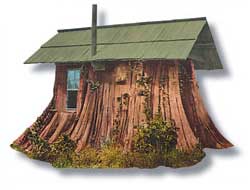Seattle, a city that often stuns newcomers from other major cities with its unbearable whiteness of being, is having its eyes opened to race. Yes, things are on the march in Vanilla City.
This week’s immigrant demonstration—the second this spring to bring tens of thousands into the streets—has been a perception-shifting public display of the size and scope of the largely invisible Latino community. That was exactly the intention. Nationwide, immigrant communities, and particularly Latinos, have flexed a muscle many Americans didn’t know existed.
Meantime, tensions are mounting over changes in the Central District. Seattle was once one of the most segregated cities in the north, with more than 90 percent of the African-American population confined to the central city. In the 1960s and ’70s, the CD expanded when open housing and forced school busing spurred white flight to the suburbs. Now, rising home prices and the demand for affordable single-family housing has boosted gentrification. Black flight and racial integration are changing the Central District’s identity, and many residents are feeling the loss of their community. Retired Rev. Samuel McKinney recently told Seattle Times columnist Danny Westneat, “Urban renewal always means Negro removal.”
The honest discussion of racial issues here is difficult in part because it begins from a commonly held assumption among whites that the ideal society is a raceless society. If race doesn’t—or shouldn’t—matter, then focusing on race is a distraction. White conservatives often believe this as a matter of principle, viewing America as a kind of equal opportunity meritocracy. White liberals, on the other hand, are eager to focus on how pretty the rainbow is and that we’re all the same inside. The real translation is that underneath dark skin there is a white person who is eager to get out. The more minorities “act white,” the more accepted they are by the mainstream. Such views downplay the life-shaping importance of racial experience.
Another conversation stopper is the idea that race can only be discussed in positive terms or on terms that are acceptable to whoever feels racially oppressed. Since whites generally view themselves as not having race, racial discussion is either seen as for minorities only or as a guilt-inducing lecture by the victims of racism.
Conversations happen, though. Usually when something blows up. This tends to occur where people are openly struggling with ideas, namely, in the microcosm of an academic institution. Earlier this spring, there was a mess at Cornish College of the Arts after three white drama students performed a skit satirizing the Civil Rights movement. Dressed in clown costumes, they lampooned Martin Luther King Jr., Rosa Parks, and others in a way a number of students and faculty—white and black—found offensive. They portrayed lunch-counter activists demanding watermelon and chitlins. The students were allegedly striving for a kind of irony, without realizing, apparently, that Seattle is the most irony-challenged town on the West Coast. Add that to racially clueless.
This followed the brouhaha earlier this year at Lakeside prep school over the controversial cancellation of a speaking engagement by author Dinesh D’Souza, the conservative East Indian immigrant whose views on race were considered to be particularly offensive to a school that has hitched its academic and financial future to the “diversity” bandwagon. I covered the controversy in a previous column (see Mossback, “Old-School Headache,” Feb. 1). But the D’Souza saga has a new chapter. The Hoover Institution fellow spoke at Seattle University on Monday, May 1, to an audience that also included Lakeside staff, students, and parents who finally had their chance to hear him on a topic all the more relevant given what happened: “Authentic vs. Bogus Diversity in Education.”
D’Souza’s talk was wide-ranging, from immigration to Iraq, and there is too much to summarize here. But he was particularly good when he critiqued the PC culture of academia as manifested through the embrace of so-called diversity programs and multiculturalism. The problem, D’Souza says, isn’t that schools want to teach the best (and worst) traditions of non-Western cultures, it’s that they don’t. In the name of diversity, they offer what is, in fact, a leftist critique of Western culture and American society. Instead of exposing students to, say, the Koran or Bhagavad Gita, they’re given books on “Marxist lesbianism in Peru.”
Academic multiculturalism is taught by people who are “aliens in their own culture.” Their approach idealizes and exoticizes other cultures at the expense of our own. He recounted that, as an East Indian, he was well familiar with a type he called the white “ponytailed liberal,” who would profess interest in Indian culture as long as it fit his exotic utopian fantasies. This was a person who overlooked India’s poverty and hierarchical caste system to see it only as a land of liberation and spiritual wonder. Dare suggest that India is anything less than ideal and the ponytailed liberal loses interest. “He’s creating a mythical India and projecting his discontents and beefs onto it.”
How multicultural is it to refuse to see people as they are but instead see them only as you want them to be?
Real diversity, D’Souza argues, is a return to the ideals of classic liberal education—open, wide-ranging, and willing to deal honestly and openly with the complexities of issues of culture, history, and race. To do that, however, we have to be willing to hear what we don’t want to hear, speak our minds even when it’s scary, and ask questions that we really don’t have the answers for.
I’m glad that part of D’Souza’s message was finally heard in Seattle.







